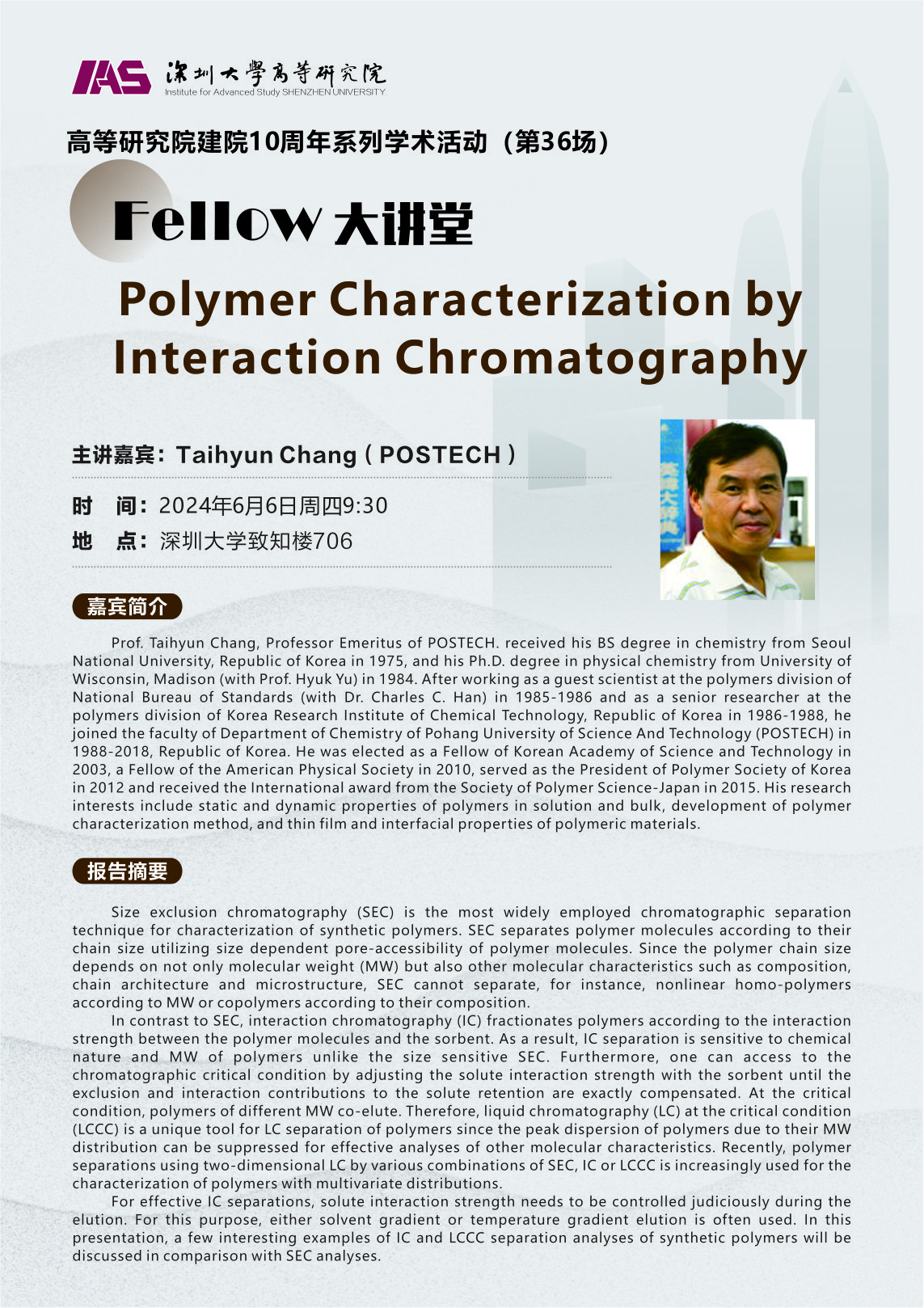报告主题:Polymer Characterization by Interaction Chromatography
主讲人:Taihyun Chang(POSTECH)
时 间:2024年6月6日周四9:30
地 点:深圳大学致知楼706
嘉宾简介:
Prof. Taihyun Chang, Professor Emeritus of POSTECH. received his BS degree in chemistry from Seoul National University, Republic of Korea in 1975, and his Ph.D. degree in physical chemistry from University of Wisconsin, Madison (with Prof. Hyuk Yu) in 1984. After working as a guest scientist at the polymers division of National Bureau of Standards (with Dr. Charles C. Han) in 1985-1986 and as a senior researcher at the polymers division of Korea Research Institute of Chemical Technology, Republic of Korea in 1986-1988, he joined the faculty of Department of Chemistry of Pohang University of Science And Technology (POSTECH) in 1988-2018, Republic of Korea. He was elected as a Fellow of Korean Academy of Science and Technology in 2003, a Fellow of the American Physical Society in 2010, served as the President of Polymer Society of Korea in 2012 and received the International award from the Society of Polymer Science-Japan in 2015. His research interests include static and dynamic properties of polymers in solution and bulk, development of polymer characterization method, and thin film and interfacial properties of polymeric materials.
报告摘要:
Size exclusion chromatography (SEC) is the most widely employed chromatographic separation technique for characterization of synthetic polymers. SEC separates polymer molecules according to their chain size utilizing size dependent pore-accessibility of polymer molecules. Since the polymer chain size depends on not only molecular weight (MW) but also other molecular characteristics such as composition, chain architecture and microstructure, SEC cannot separate, for instance, nonlinear homo-polymers according to MW or copolymers according to their composition.
In contrast to SEC, interaction chromatography (IC) fractionates polymers according to the interaction strength between the polymer molecules and the sorbent. As a result, IC separation is sensitive to chemical nature and MW of polymers unlike the size sensitive SEC. Furthermore, one can access to the chromatographic critical condition by adjusting the solute interaction strength with the sorbent until the exclusion and interaction contributions to the solute retention are exactly compensated. At the critical condition, polymers of different MW co-elute. Therefore, liquid chromatography (LC) at the critical condition (LCCC) is a unique tool for LC separation of polymers since the peak dispersion of polymers due to their MW distribution can be suppressed for effective analyses of other molecular characteristics. Recently, polymer separations using two-dimensional LC by various combinations of SEC, IC or LCCC is increasingly used for the characterization of polymers with multivariate distributions.
For effective IC separations, solute interaction strength needs to be controlled judiciously during the elution. For this purpose, either solvent gradient or temperature gradient elution is often used. In this presentation, a few interesting examples of IC and LCCC separation analyses of synthetic polymers will be discussed in comparison with SEC analyses.



